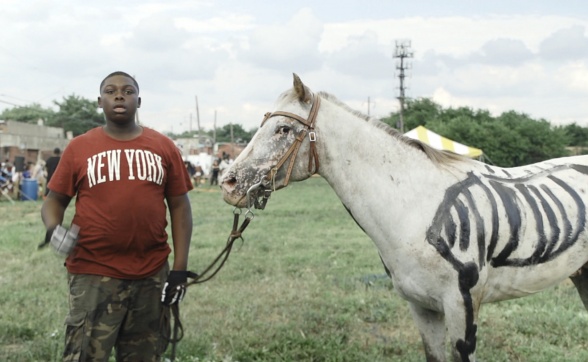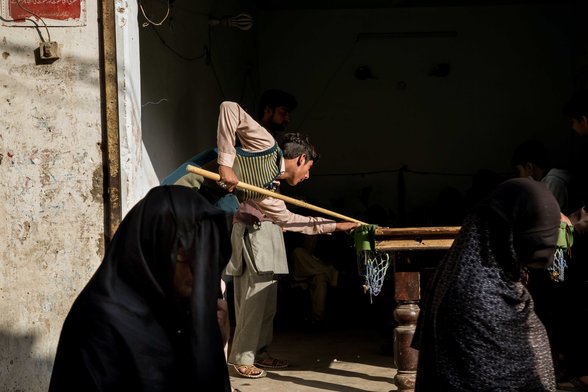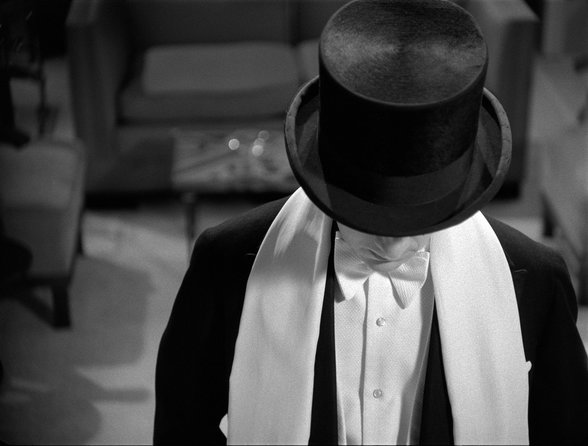From Dream Arts Projects to Inspiring Places: Get to know the Liverpool Biennial 2018 artists
Posted on 14 November 2017 by Liverpool Biennial

Mohamed Bourouissa, Horse Day (film still), 2014-15. Image courtesy the artist and Kamel Mennour, Paris/London
Mohamed Bourouissa, Horse Day (film still), 2014-15. Image courtesy the artist and Kamel Mennour, Paris/London
We sit down with some of the Liverpool Biennial 2018 artists to find out what makes them tick and hear their thoughts on the city, as they embark on their first visit in preparation for Beautiful world, where are you?
First impressions of Liverpool?
Holly Hendry: Very friendly people. It seems like a buzzing, exciting place that’s got a very varied approach to how people live within a city.
Suki Seokyeong Kang: At first, Liverpool centre seemed like any other city. But as you walk down towards the sea and the strand, you begin to notice the city's development. It's fascinating to see the history of the city, and how it has changed over the years, physically reflected in the material surroundings of the buildings and pavements.
Mathias Poledna: I’ve been here once about 12 years ago, and it seems like it was a bit more derelict then. I came for Liverpool Biennial. I’ve seen some lovely venues this time round. I like the place next to the cathedral; the kind of Greek Revival building – The Oratory. The graveyard and park next to it are also quite beautiful.
Mohamed Bourouissa: I love the city! The architecture is very impressive. Today I met some people from Granby Community Garden. You can really feel a sense of activism and community here.

Madiha Aijaz, Sehwan End of Moharram, 2016. Image courtesy Madiha Aijaz
Your favourite place in the world?
Suki Seokyeong Kang: My studio in Seoul, Korea. It's located near a very traditional Korean palace called Gyeong Bok Palace. My studio is small and square; about 3m high with lots of natural light, which is great for seeing colour. It's a very neutral space, so I can work or do anything there.
Madiha Aijaz: One place? That’s hard. Karachi – the city where I come from – is close to heart. And some other cities in India; Delhi and Bombay. Generally, I find the connection between colonial cities and post-colonial spaces, and the shared histories between the cities of the Indian subcontinent, very interesting.
Ei Arakawa: My home in Brooklyn. Actually, maybe not. Perhaps I don't have one. I hope I can make one. I am currently renovating my bedroom – dividing-up the open space to make it more peaceful.
Silke Otto-Knapp: An island in Newfoundland. But there are many places that I have not been to, that could also be favourites.

Ei Arakawa, Hālau Hula O Na Mele 'Āina O Hawai’i with Ei Arakawa and DAS INSTITUT (performance view), 2016. Image courtesy the artist. Photo: Serpentine Gallery, UK
Your dream arts project?
Holly Hendry: I can’t be specific at all! Something large-scale, with a crane. I’ve been thinking about cranes a lot; I guess they’re not something really in the vocabulary of things I am able to use, due to cost, space, skills etc.
Ei Arakawa: One that I have 10 years to prepare! I never have enough time to dedicate to a project.
Mohamed Bourouissa: I don't really think about making art in this way. My work is always very responsive to a particular context or situation around which I build a project.
Silke Otto-Knapp: Maybe something like a contemporary Bauhaus, where people of many different disciplines could work together.

Mathias Poledna, A Village by the Sea (film still), 2011. Image courtesy the artist, Gallerie Daniel Buchholz, Cologne and Berlin, Galerie Meyer Kainer, Vienna, and Richard Telles Fine Art, Los Angeles
Someone or something that has influenced your practice?
Holly Hendry: My mum and dad. They’re both makers in different ways. I’ve learnt how to approach things from them. My dad’s an architect, so I guess he’s also ‘building big’. That thing of using your hands. My mum works with kids, in a social work situation.
Madiha Aijaz: There’s no one thing in particular. It’s primarily about the people that I come into contact with. I like conversations; I like histories of people. I think that’s where most of my work stems from. Conversation and connections on a personal level.
Mathias Poledna: There are many, many things – a sum of all parts. I guess, being based in LA but from Austria, I live in a culture that I feel a great distance to. There’s a great familiarity, but also a great distance. This sense is, in many ways, a source of my work. The relationship between familiarity and distance; how you look at something.
Mohamed Bourouissa: Many different artists, movies etc. Music – rap especially – is very present in my work. I don't know if it's changed my practice, but it's definitely in there. My mum used to listen to Cheb Hasni a lot, and when I listen to him today I get something from his lyrics. He's not changed me, just gives another point of view. It's never just one person. You get many things from many different people.

Holly Hendry, Homeostasis, 2014. Installation view at Courtyard C, Sharjah Art Foundation. Image courtesy the artist.
A concept or idea that you are looking into at the moment?
Holly Hendry: I’ve been thinking a lot about the idea of swallowed objects, and incorporation between bodies and other things. I’ve done quite a bit of research into a museum in America called the Mütter Museum that has a collection of swallowed objects. I’m interested in the idea of merging of body and thing into one, and the transformation of an object into something else. I was looking a lot at burial before, so I guess this is moving things into a more medical sphere.
Madiha Aijaz: Yes, a couple of things. How we understand entertainment, for example, and what me mean by it? What are the ways that people entertain themselves? How can I read that more, study it, understand it?
I’m also looking at public spaces, such as libraries, and what they offer to people now that we’re spending increasing amounts of time on digital platforms. It’s interesting that there’s still a dedicated community of people – almost like a last generation – that still use libraries despite the fact that these spaces have become increasingly run down or started to close. In some ways, I think there’s an element of class division. When you’re in a certain circle and you don’t step out of that, you don’t end up seeing other things.

Silke Otto-Knapp, Monotones (Figures and Groups), 2016
Mathias Poledna: I tend to work on several different ideas at the same time, and develop them over many years. Sometimes I hark back to ideas, and a lot of my work is in response to, or in dialogue with, previous works that I’ve made; attempting to address questions that were raised in the process before.
But I think visits like these are, in a way, very important to me. It’s not that I would create anything that specifically relates to a particular site or history of where I’m invited – on the contrary – but still, there’s something that flavours my way of thinking.
Silke Otto-Knapp: Not really. I think, like most people, I am just looking into how to navigate making work and being an artist in the contemporary political climate; especially in America. That’s something I’m trying to figure out on a daily basis. I think the best thing is to start small. It’s about breaking the bigger picture down into the more local things you can do; responding to your immediate surroundings. It’s a way of not feeling completely disempowered.

Suki Seokyeong Kang, Jeong, 2014-2015. Image courtesy the artist.
Artists: Madiha Aijaz, Ei Arakawa, Mohamed Bourouissa, Holly Hendry, Silke Otto-Knapp, Mathias Poledna, and Suki Seokyeong Kang.
Liverpool Biennial 2018: Beautiful world, where are you? runs between 14 July – 28 October. See the full list of confirmed artists and find out more here.
Watch our video of the visiting artists’ journey as they toured Liverpool for the first time:
Liverpool Biennial
55 New Bird Street
Liverpool L1 0BW
- T +44 (0)151 709 7444
- info@biennial.com
Liverpool Biennial is funded by
Founding Supporter
James Moores